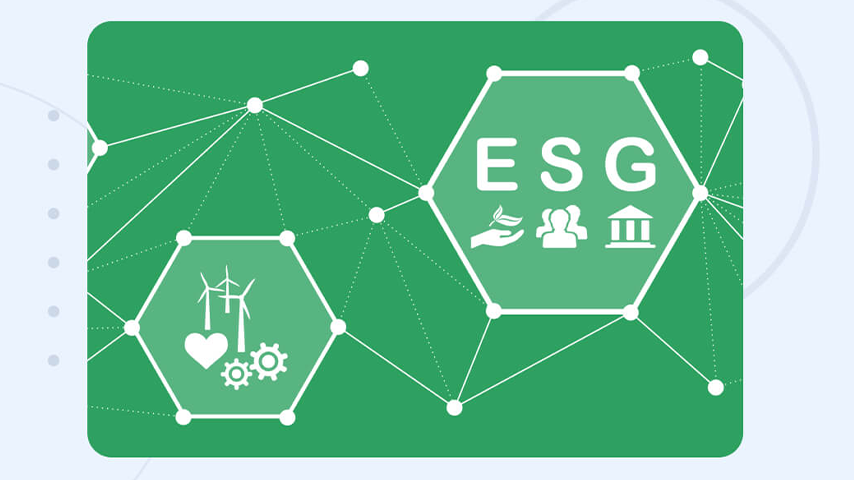In an era where Environmental, Social, and Governance (ESG) factors are central to corporate strategy and stakeholder trust, real-time data has emerged as a game-changer. As companies strive to meet ESG goals, transparency, accuracy, and speed in tracking metrics have become critical. Real-time data allows organizations to monitor their ESG impact continuously, making it easier to respond swiftly to changes and optimize sustainability efforts. But why exactly is real-time data so important for ESG tracking, and how can businesses make the most of it?
This blog explores the role of real-time data in effective ESG tracking, the benefits it brings, and how data solutions for ESG tracking and sustainability data integration tools help companies stay ahead.
The Growing Importance of ESG Tracking
ESG metrics measure an organization’s commitment to environmental sustainability, social responsibility, and sound governance practices. They cover a wide range of metrics, such as carbon emissions, energy usage, employee well-being, community impact, and corporate governance standards. However, accurately tracking these metrics requires sophisticated data management tools and processes due to the sheer volume and complexity of ESG data.
As ESG has become increasingly tied to regulatory requirements, investor demands, and customer expectations, companies face pressure to provide timely and reliable ESG reports. That’s where real-time data makes all the difference.
Real-Time Data vs. Traditional ESG Tracking
Traditional ESG tracking often relies on periodic data reporting—monthly, quarterly, or annually—which can result in outdated insights that fail to capture the current state of an organization’s ESG impact. By the time data is aggregated, processed, and reported, it may no longer reflect the current conditions, making it challenging to address issues proactively.
Real-time data, on the other hand, enables continuous monitoring. This allows companies to view, analyze, and act on ESG data as it’s generated, providing immediate insights into performance. Unlike traditional methods, real-time ESG tracking can identify trends, detect potential issues, and facilitate immediate corrective actions.
Key Benefits of Real-Time Data in ESG Tracking
1. Enhanced Accuracy and Reliability
Real-time data collection reduces the risk of inaccuracies that often arise from manual data entry or delayed reporting. Automated data solutions for ESG tracking, like IoT sensors and cloud-based platforms, allow for seamless, instant data collection and integration. These tools reduce human error and ensure that organizations receive accurate, reliable data that reflects their current ESG performance.
Additionally, real-time tracking enhances transparency, which is crucial for both regulatory compliance and stakeholder trust. Accurate, up-to-date data can make ESG reports more credible and verifiable, strengthening a company’s reputation.
2. Proactive Decision-Making
In ESG, timely action is essential. For example, if an organization is approaching its emissions cap, immediate intervention can prevent regulatory violations. Real-time data empowers companies to make proactive decisions, whether they’re optimizing energy usage, addressing workforce issues, or adjusting supply chain practices to reduce carbon emissions.
With real-time data, companies no longer have to wait for the results of quarterly or annual reports to make strategic decisions. Instead, they can continuously monitor their ESG metrics, allowing them to identify risks and opportunities as they arise. This enables a level of agility that traditional ESG tracking simply can’t match.
3. Streamlined Compliance and Reporting
ESG compliance requirements are growing more stringent globally, with mandates requiring companies to disclose specific sustainability metrics. Real-time data helps companies meet these demands by simplifying data collection and reporting. Sustainability data integration tools automatically aggregate data from multiple sources, ensuring that reports are comprehensive and compliant with the latest regulations.
By using real-time data, companies can easily generate accurate reports for stakeholders, investors, and regulators. This streamlined reporting process reduces administrative burdens and allows organizations to focus on improving their ESG practices rather than simply meeting compliance standards.
4. Improved Stakeholder Engagement
Investors, customers, and other stakeholders are increasingly looking for companies that are committed to ESG principles. Real-time ESG tracking allows companies to provide stakeholders with current information on their sustainability practices, improving transparency and fostering trust.
With access to up-to-date ESG metrics, stakeholders gain a clearer understanding of a company’s values and commitments. In an environment where ESG performance influences investment decisions and brand reputation, real-time data can be a powerful tool for engaging and retaining stakeholders.
5. Increased Responsiveness to Market Changes
ESG metrics are influenced by a wide range of factors, from regulatory shifts to consumer sentiment. Real-time data solutions for ESG tracking enable companies to quickly adapt to these changes. If a new regulation requires lower emission levels, for instance, real-time data allows companies to assess their current emissions immediately and make adjustments to stay compliant.
Similarly, sustainability data integration tools can quickly incorporate new data sources or metrics, allowing companies to pivot their ESG strategies without delay. This adaptability gives companies a competitive advantage, helping them stay ahead in an evolving market.
How Data Solutions and Integration Tools Facilitate Real-Time ESG Tracking
Achieving effective real-time ESG tracking depends on robust data solutions and sustainability data integration tools. These solutions are equipped with several key capabilities that facilitate efficient, accurate, and continuous ESG tracking.
IoT Devices for Environmental Data Collection
Internet of Things (IoT) devices, such as sensors for measuring emissions, water usage, and energy consumption, are instrumental in real-time ESG tracking. These devices provide continuous data streams that can be integrated into ESG tracking systems, delivering instant insights into environmental impact. For example, real-time air quality sensors can measure emissions data, helping organizations ensure they stay within regulatory limits.
Advanced Analytics and Machine Learning Models
Real-time data solutions for ESG tracking often use machine learning algorithms to detect trends, flag anomalies, and make predictions. Predictive analytics can project future ESG performance based on current data, enabling proactive management. For instance, ML models can forecast emissions trends, allowing companies to adjust their processes if they’re on track to exceed emissions targets.
Centralized Data Integration Platforms
Sustainability data integration tools bring together data from multiple sources—supply chain records, employee reports, IoT sensors—into a unified platform. This centralized data repository makes real-time ESG data accessible and manageable, enabling companies to conduct comprehensive analyses without spending valuable time on data aggregation.
Dashboards and Visualization Tools
Real-time data solutions often include dashboards that display ESG metrics in a visually intuitive format. These dashboards allow stakeholders to monitor metrics at a glance, track progress, and quickly spot areas that require attention. Visualization tools make it easier for decision-makers to interpret complex data, driving faster, more informed decisions.
Implementing Real-Time Data for ESG Tracking: Best Practices
For companies looking to adopt real-time ESG tracking, here are some key practices to ensure success:
1. Define Clear ESG Objectives: Establish specific ESG metrics and goals to focus real-time tracking efforts. Identify which metrics will benefit most from real-time data, such as energy usage or waste reduction.
2. Invest in Robust Data Integration Tools: Choose sustainability data integration tools that are compatible with various data sources and scalable to handle future needs. A flexible integration tool can adapt to evolving ESG requirements.
3. Focus on Data Quality and Security: Real-time data is only as useful as it is accurate. Ensure data quality by using reliable data sources and conducting regular audits. Also, prioritize data security to protect sensitive ESG information.
4. Train Teams for Effective Use: Employees need training to understand how to use real-time data solutions effectively. Make sure teams are comfortable with ESG dashboards and aware of best practices for data interpretation.
Conclusion
Real-time data has transformed ESG tracking by providing businesses with timely, accurate insights that support proactive decision-making and greater transparency. By leveraging data solutions for ESG tracking, including advanced analytics and sustainability data integration tools, companies can monitor and improve their ESG performance continuously. For organizations committed to sustainability and responsible governance, real-time data is not just a tool—it’s a strategic asset that enables them to stay ahead in today’s fast-paced, ESG-focused landscape.



